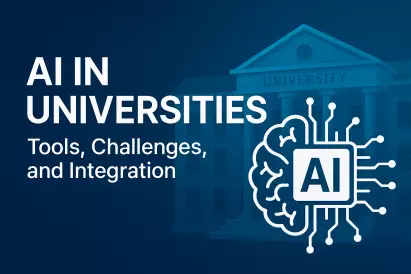Eduniversal Best Masters Ranking in Romania
Master's degree programs in Romania in 2025 are adapting to a rapidly evolving job market, emphasizing digitalization, flexible study, and greater international recognition. This article explores the key trends, challenges, and opportunities ahead for students, institutions, and the Romanian economy. Discover how Romania’s higher education system is transforming to meet the demands of a competitive and innovation-driven global workforce.
Discover in detail the Master in Romania
Overview of Romania’s Master's Education in 2025
Master’s degrees in Romania by 2025 are evolving within a dynamic market defined by a growing demand for high-level qualifications. Set against a backdrop of employment growth, technological change, and educational reform, master's programs are becoming central to workforce development, especially as nearly one-third of job opportunitiesOverview of Romania’s Master's Education in 2025
Master’s degrees in Romania by 2025 are evolving within a dynamic market defined by a growing demand for high-level qualifications. Set against a backdrop of employment growth, technological change, and educational reform, master's programs are becoming central to workforce development, especially as nearly one-third of job opportunities in Romania are forecasted to require advanced educational credentials.
The alignment of Romania’s master's curriculum with labour market demands highlights the strategic importance of education reform. Policy emphasis on artificial intelligence, green technologies, and digital competence underpins these transitions, as institutions and students alike respond to a shifting employment landscape.
Labour Market Trends and Policy Drivers
Romania's labour market has seen encouraging progress, marked by a consistent rise in employment rates and a projected annual growth of 0.6–0.9% from 2022 to 2035. This growth outpaces the EU average and signifies the nation's movement toward a highly qualified workforce. Approximately 66% of the population currently holds a medium-level qualification, with a strategic policy push to increase the proportion of highly qualified individuals to 26% by 2035.
Despite this progress, regional economic disparities and rural-urban inequality present challenges. Individuals from socio-economically disadvantaged groups—including women, rural-background students, and first-generation university-goers—often face lower starting incomes and employability rates. Addressing these disparities through targeted scholarships and broader access remains a key policy imperative.
Proactive government strategies focus on future-oriented skill development. This includes emerging fields such as cybersecurity and data protection, reflecting broader trends toward digital and green transformation.
Trends in Academic Disciplines and Study Models
Several key trends are transforming the structure and attractiveness of master’s programs in Romania. Notably, there is growing enrolment in interdisciplinary fields that support industrial modernization, sustainable development, and healthcare. Institutions are adapting traditional disciplines to integrate digital and technological components, making studies more applicable and aligned with workforce realities.
Interdisciplinary education is gaining traction, especially in programs that merge STEM with business fields like innovation and project management. Offerings now often include flexible models—blended learning, modular structures, and part-time modes—that appeal to working professionals and non-traditional students, enriching learning pathways for a diverse population.
Digital Transformation and Hybrid Learning Formats
Romania’s higher education institutions are embracing blended and hybrid forms of learning, reflecting broader digitization trends. While entirely online master's programs are still limited, most offerings feature a mix of online lectures, in-person seminars, labs, and project work. Teaching remains strongly focused on traditional elements like dissertation defenses and coursework-based evaluations, ensuring academic rigor in step with Bologna Process reforms.
These tech-integrated models offer scalability and flexibility—beneficial for students managing professional or personal commitments. Increased digital capacity is also a response to the demand in fields like big data management, where tech fluency is a prerequisite.
International Recognition and Academic Mobility
Internationalization is a cornerstone of Romania’s education strategy moving forward. Romanian institutions are actively engaging in global partnerships, research networks, and student exchanges. This significantly boosts the visibility and recognition of Romanian master’s qualifications abroad, thanks to alignment with European frameworks such as the Bologna Process.
Programs supporting academic mobility and curricula harmonization are helping universities attract international students and enhance employability outcomes. Initiatives like regional consortia—linking universities with industries and public sector partners—serve to drive cross-border collaborations. Master’s degrees in disciplines such as sustainable development and environmental management are increasingly tailored for global relevance.
Cost, Funding, and Scholarship Accessibility
Tuition for Romanian master’s programs typically ranges from €2,000 to €9,700 annually. However, several universities offer tuition waivers, providing competitive options for both domestic and international students. Romania’s relatively low living costs further enhance its attractiveness as a study destination.
Despite these advantages, affordability remains a central issue, particularly for underprivileged students, prompting government and university-level action in the form of scholarships and financial aid programs. Specific fields, such as public health management and green energy, often benefit from subsidies aimed at encouraging enrolment in socially impactful disciplines.
Evolving Student Profiles and Demographics
The 2025 student demographic is increasingly urban, international, and diverse. Many entrants are non-traditional learners seeking career shifts or upskilling opportunities. These students increasingly prioritize career-oriented education, digital tools, and practical applications over purely theoretical knowledge.
There is a growing need for programs focused on sectors aligned with economic priorities, including industrial operations, clean energy, and healthcare. With Romania’s working-age population on the decline and the overall population aging, master’s education is crucial in facilitating professional retraining and reskilling across sectors.
Challenges Within the Master’s Education Landscape
- Affordability and access: Even with lower tuition compared to other countries, disparities in access limit inclusivity for rural and marginalized communities.
- Relevance to industry: Curriculum alignment remains complex, especially for new fields such as artificial intelligence, climate science, and digital innovation.
- Quality assurance: The national accreditation agency (ARACIS) continues to play a vital role, though quality differences still exist across institutions.
- Skills obsolescence: Fast-paced technological change demands ongoing program updates and innovative teaching models to maintain relevance.
- Structural integration: Coordination between dual education, vocational routes, and academic pathways still needs policy refinement and institutional alignment.
Strategic Opportunities for Growth and Innovation
Romania’s higher education system is presented with tangible opportunities for transformation. Among the most impactful are curriculum innovation, enhanced digital integration, and promotion of dual education models that include in-company training. These approaches increase employability while addressing market needs.
Programs combining academic rigor with experiential learning—especially those in areas like entrepreneurship and systems thinking—prepare graduates to face global complexities. Policies aimed at improving participation among underrepresented groups can further accelerate inclusion and equity.
International partnerships and the use of real-time labour market analytics provide feedback loops that continually refine and personalize educational delivery. Romania’s mobility-friendly frameworks and career-aligned curricula underscore its strategic leap into a more agile, future-ready education system.
Impacts on Students, Employers, and the National Economy
For students: Master’s programs in Romania in 2025 offer adaptable pathways for specialization, practical skills development, and career advancement. Flexible study formats and interdisciplinary education further cater to diverse learner goals, enhancing both individual mobility and long-term growth prospects.
For employers: Graduates of master's programs present a skilled talent pool ready to work in evolving domains such as renewable energy, smart manufacturing, and AI-driven decision-making. Strengthened collaboration with universities leads to a workforce trained with real-world applications in mind.
For the economy: Increased access to high-level qualifications boosts national productivity and fosters an economy based on knowledge and innovation. As Romania moves towards demographic and technological transitions, upskilled professionals from master’s tracks are key to future-ready economic resilience.
Discover Eduniversal Best Masters Ranking in Romania by specialization
Latest news
Sciences Po has opened a regional hub in São Paulo, hosted by the France-Brazil Chamber of Commerce, to strengthen academic partnerships, expand research collaboration and support students and alumni across Latin America and the Caribbean.
Explore how AI is transforming universities worldwide—its tools, challenges, and the strategic steps necessary for ethical and effective integration.
Dive deep into what makes the University of Cape Town the top-ranked university in Africa in 2025, from rankings and research to student life and social impact.



